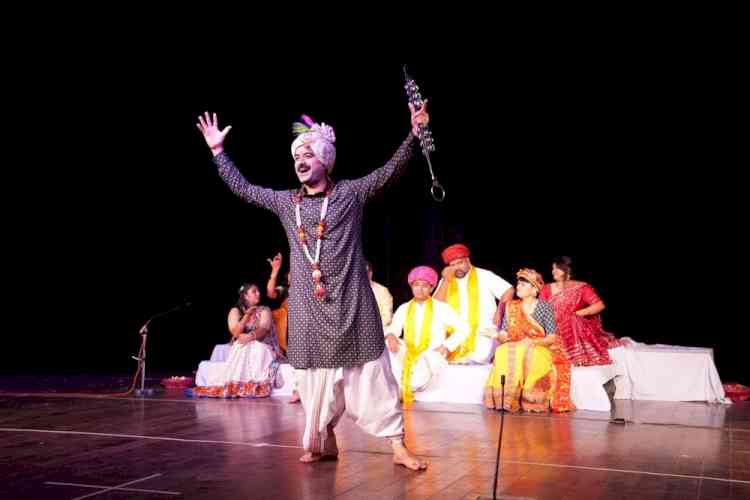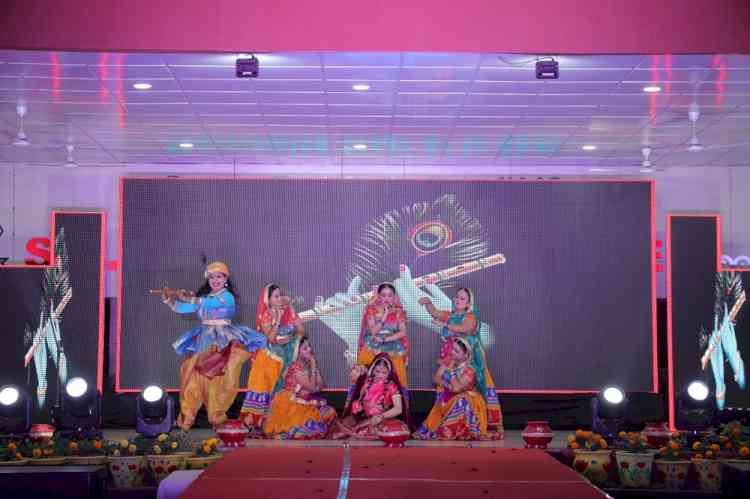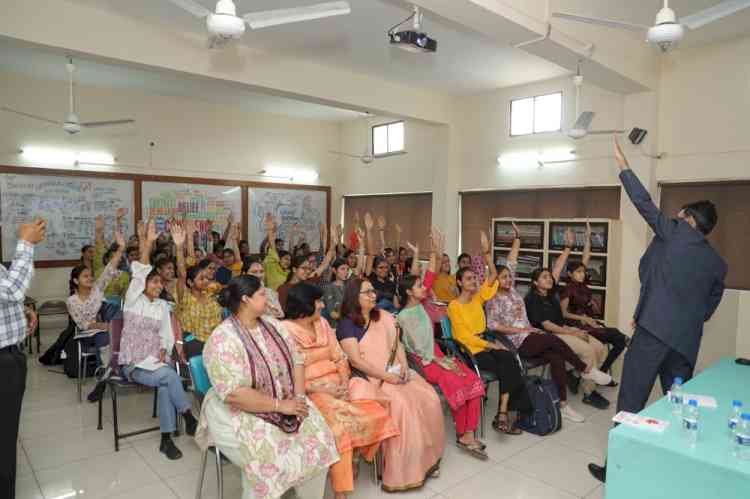Annual Pradeep Kumar Memorial Lecture, Political Science, PU
The key speaker Prof. E. Sridharan spoke on “Party System Evolution and Coalition Politics in India”

Chandigarh: The Department of Political Science, Panjab University, Chandigarh under the supervision of Prof. Ashutosh Kumar organized the Annual Pradeep Kumar Memorial Lecture which was chaired by Professor Bhupinder Brar. The key speaker was Prof. E. Sridharan, the Academic Director and Chief Executive in the University of Pennsylvania, Institute for the Advanced Study of India, New Delhi. He spoke on “Party System Evolution and Coalition Politics in India”.
In his lecture Professor Sridharan described the evolution of the party system and coalition politics in India in four phases, if one goes by the votes and seats distribution. The first phase was the period between 1952to 1967 which was the period of the Congress hegemony. During this period the Congress had a two-third majority and an all-India geographical spread. The electoral game was between the Congress and fragmented opposition. Due to the first past the post system and securing plurality of votes, the rest of the votes were divided between small chunks of parties. The Congress lost its majority in six seats during 1967 elections. The second phase was between 1967- 1989 which witnessed the erosion of the Congress hegemony. The Congress win was based on the plurality of votes but at the state level many changes took place after 1967. The playing of the Duverger’s Law of Opposition states that in the first past the post system only two parties will get 75-80% of vote share. In India accordingly there has been a bipolarity at the state level right from the beginning like Congress vs Left parties in Kerala and West Bengal, Congress vs Jana Sangh in Himachal Pradesh, Rajasthan and Delhi and Congress vs Regional Parties in Tamil Nadu, Punjab, Assam, Andhra Pradesh, Jammu and Kashmir. The opposition support would get consolidated as per the Duverger’s Law. The post-1989 politics laid the foundation of the rise of the Jana Sangh, Left parties, Regional parties. The third phase was from 1989 to 2014 when the coalition politics was witnessed. The Congress vote share declined from 40% to as low as 19%. Many states of course did not undergo bi-polar. Only after 2014 most of the states with the exception of the states like UP and Tamil Nadu got bipolarized. This phase witnessed three mega trends that is the state level entrenchment of Duverger’s law. The BJP was in 19 states number one or two party. State level politics shifted in favour of the BJP. The Congress was the dominant party in 24 states earlier but after 1989 the Congress dropped to second position.
The fourth phase started with the 2014 elections. During this time the politics has witnessed the return of the one-party dominance system as the vote share of BJP has risen from 19% to 24% vote share during 2014 and 2019 election. The long-term structural patterns are visible in the sense that the BJP has consolidated itself as a strong party in 19 states and has managed to turn the swing voters in its favour. Some ideological reasons are there but one also has to consider the skilled management of coalition by the BJP as it got coalition moves in their favour to get more seats. Congress' incredibility to give answers to the allegations, the popularity of the Gujarat Model reflected that Modi can deliver has helped the party. Congress lost the sections of social bases to other parties like BSP. The politics of this phase raise another important question “Is it a replica of Congress dominance?”. Prof. E. Sridharan argues that the BJP is yet to achieve it because the vote share of BJP has not gone beyond 40%. The BJP had not got 350 plus seats like the Congress in its heydays. He argued that the BJP is not yet ideologically hegemonic as the Congress was during the first phase. The BJP is still heavily concentrated in northern, south western areas and not throughout India. The BJP has the electoral hegemony due to 40-45% vote share and divided opposition but the party ideology of the BJP is widely contested.


 cityairnews
cityairnews 








